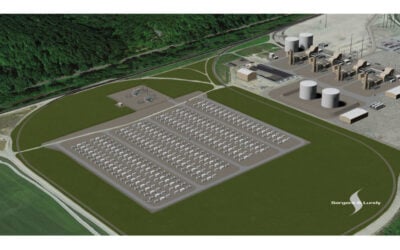PwC analysts have called the period 2019 to 2022 as a real inflection point for customers to retrofit storage to their home PV systems. Image: SMA.
The supply situation for home energy storage systems is improving continuously. The customer can choose between more and more different offerings – and with Daimler and Tesla entering this market, we see trustworthy players with outstanding brand reputation and thus potential to change the game. Comparing the data sheets (and even more, brochures and press releases) of many of the systems available today, the capability of refurbishment – referred to in some markets as retrofitting - is being used as value proposition. But is refurbishment as an application a more or less generic use case, or does it really make a difference?
Looking at the German home energy storage market, we’ve been experiencing a clear focus on new installations. The design of the government incentive programme allows funding for new installations only, not attracting the installed base at all. The renewable energy law, EEG, started to allow self-consumption in 2009, but systems installed before 2013 receive a FiT that makes them not really attractive for a battery system refurbishment before the FiT finally expires after 20 years of operation. PricewaterhouseCooper‘s analysts expect significant refurbishment figures starting somewhere down the road between 2019 and 2022.
Enjoy 12 months of exclusive analysis
- Regular insight and analysis of the industry’s biggest developments
- In-depth interviews with the industry’s leading figures
- Annual digital subscription to the PV Tech Power journal
- Discounts on Solar Media’s portfolio of events, in-person and virtual
There are a couple of interesting markets with a significant installed base of residential PV systems around the world. In addition to Germany, the markets worth having a look at in Europe are the BeNeLux region, France to a certain extent, Italy and the UK. Australia, Japan and the U.S. complete the worldwide list.
In each of these countries we’ve experienced specific incentive models to facilitate decentralised generation, and these models now set the scene for an energy storage market.
The US: Net metering forever?
Being one of the largest national economies in the world, the U.S. is usually the first that people to take a closer look at when investigating global opportunities in any industry.
PV has grown stronger and stronger over the last few years, but with one very simple drawback for energy storage. The most common tariff model for decentralised generation, at least in the West Coast sun states, is so-called “net metering”, a billing mechanism to credit the system owner for electricity fed into the grid. In a nutshell, a customer with a decentralised generation plant such as PV is allowed to generate more electricity than his or her current demand during daytime. In a net-metered installation, the meter will run backwards to provide a “credit” against the demand during nighttime. The billing is only covering the customer’s “net” energy use, hence the name. The grid virtually is a non-dissipative storage system the customer can use but does not have to pay for. If only paradise was half as nice!
The remaining use case for a residential storage system has been – and was supposed to stay – pure backup in case of a grid failure. This made up a niche market for people who were afraid of a blackout, but the volume market was hardly considerable. Even though everybody was clear about how net metering would “disappear someday”, nobody had an idea of when or how. But at the end of last year, things started changing much faster than expected. The government of Nevada installed a new tariff structure, stopping net metering from 1 January 2016, and even applied the new regulation retroactively to the complete installed base in combination with a time of use-tariff. And now, while the future of the policy is uncertain, refurbishing PV plants with energy storage systems could become first choice to maintain favourable economics.
It is very likely that we have to expect some of the major so-called third-party ownership (TPO) companies which own a significant share of the installed base and serve customers on a lease model basis, exhaust all considerable remedies trying to fight this decision. But if they do not succeed, the “Nevada case” could serve as a blueprint for other states, endangering net metering all over the U.S.
The UK has over 700,000 homes with solar, for which retrofitted energy storage could be an option. Image: Rexel Energy Solutions.
Retrofit case likely to grow stronger in other markets, too!
Looking at Australia, most of the installed base is taking advantage of classical feed-in tariffs. But the time frames are different from German models, where the date of connecting the plant is the beginning of a 20 year-period of guaranteed compensation per kilowatt-hour. In New South Wales, the feed-in tariff for residential PV systems will expire on 31 December 2016. The installed base will no longer receive any compensation for feeding electricity into the public grid. Self-consumption is the only way out of this, and an energy storage system could optimise the share of directly used PV generation. And, again, this market will mainly look to refurbishments.
Even in the UK, there are some reasons to believe that household storage will become significant. The FiT is allowing self-consumption from the beginning, so more than 700,000 residential installations could be retrofitted with batteries without any regulatory issues. The simple mathematics for self-consumption do not offer a perfect business case, but the development of electricity rates, in combination with expected time-of-use tariffs, could be another game changer. And this combination is setting up a two-condition use case that requires a clear separation of generation and storage – and can only work out if the systems are designed for refurbishment.
It looks pretty much like we’ll have to take a U-turn from the starting point of this discussion: the system’s capability of refurbishment is obviously crucial for the success of energy storage in many of the relevant markets we are seeing today.
Residential solar TPO companies have vowed to keep fighting the Nevada decision on net metering. Image: SolarCity.
Is there a specific technology to make a system 'ready for refurbishing'?
Refurbishment means that there is an existing installation, including a PV generator in a very specific configuration meeting the requirements of the rooftop’s shape, and an inverter that is meeting the commissioning day’s regulations of the utility. In most cases, it is very unlikely that the customer wants to exchange the existing PV inverter. Especially in the U.S., a major share of the installations of the last years have been put into practice with micro inverters, directly connected to the PV generator modules. Even if the customer will be ready to exchange the inverter, it is usually not an option from a technological point of view.
Systems for refurbishment have to be capable of being connected directly to the household installation, typically close to the main distribution panel. This requires a flexible setup, meaning that the storage system in combination with a battery inverter, sometimes called an “AC battery”, is the only suitable solution. We’ve been elaborating on the technological differences between AC- and DC-coupled systems in one of our previous contributions to Energy Storage News’ guest blog series.
Understanding this, it is no surprise that the three market leading suppliers on the German market today focus on flexible, AC-coupled solutions. And as soon as the utilities drive decentralised battery installations as vital components of a virtual storage plant for grid optimisation, a direct connection to a PV system will become more and more unlikely. So in the end, DC-coupled solutions with hybrid inverters will play out their strengths in new installations, especially when the use case is self-consumption, the roof is quite plain and rectangular and no micro inverters are used. For any other case, especially for refurbishment, AC-coupling clearly is the technical concept to choose.






